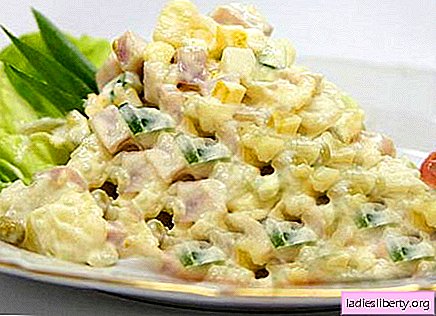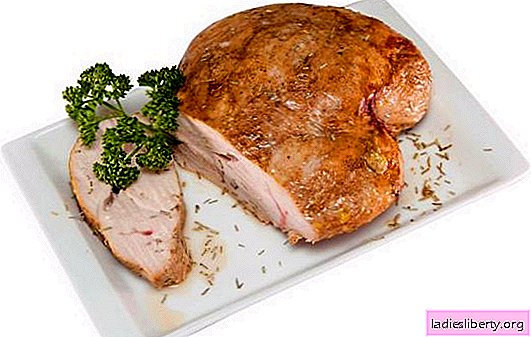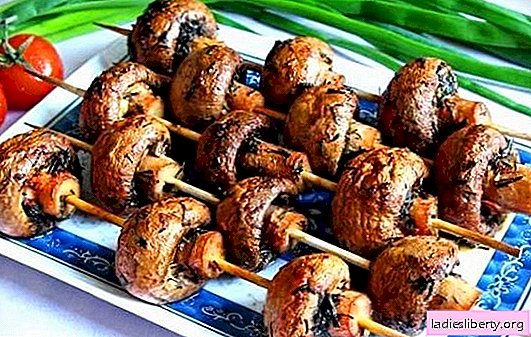
Outside the window - spring, a time when the vitamin reserves of our body are almost exhausted, and so you want fresh vegetables and fruits. Juicy greens and lures from the shelves of supermarkets and markets, as if telling us: "onions - a bunch of vitamins," "ramson - to the salad is good," "for men, parsley is a contented girlfriend."
Undoubtedly, in the battle with spring avitaminosis, early greens can become an indispensable ally: a high content of vitamin C, the lack of which we experience in the spring (hence the cause of mass colds) will become the best helper of immunity.
However, many will say: why do we need greens (early - rather expensive), if you can go to the pharmacy, buy a full set of vitamins, or at least eat “ascorbic”?

Vitamins are good, but it should be understood that they are perceived by the body as a foreign product. Therefore, the absorption of artificial vitamins is greatly reduced, while the load on the liver increases. But spring greens, unfortunately, are not as safe as they seem ...
What is the main danger
Everyone knows about the dangers of nitrates to the body and are afraid of poisoning. But "the devil is not so terrible as he is painted": the probability of intoxication with nitrates when eating vegetables is not great - for this you need to eat about a kilogram of "chemical" radish and as many cucumbers a day. And this task, you see, is not for everyone. The main poison of early greenery is pesticides, which are plentifully watered with vegetables and spices to destroy parasites. For comparison: in order for an adult to get a serious poisoning, it is enough to eat only a few grams of pesticidal dill.

Finding the exact amount of toxic chemicals used is almost impossible. Of course, there are regulations on the use of pesticides, but checks are very rare. Yes, and basically check the final product, which unscrupulous entrepreneurs can grow separately, without the use of toxic chemicals.
But with checking the vegetables for "nitration" things are much better: if you wish, you can purchase a special device - a nitratomer, which in seconds and with high accuracy will show the content of harmful nitrates (300 milligrams is considered the allowable rate for 24 hours). Note that nitrates enter the body not only with vegetables and herbs, but also with water and air, and tend to accumulate. That is, it should be considered not one serving, but the amount eaten per day.
Caution: imported products

Our major manufacturers of such chemistry is not widely used, since it is quite expensive. It is mainly used for growing small amounts of the crop and sold in spontaneous markets. Of course, they can get on the official, avoiding mandatory testing. It all depends on the conscience of businessmen and the volume of the crop, because nitrates guarantee precocity and attractive product appearance. Often enough are generous on nitrates and pesticides vegetables and greens brought from Turkey, Egypt and Holland. When conducting rapid tests at customs, nitrate levels are detected in excess of 5-8 times the permissible rate.
Where and how to "look for" nitrates

The "champions" of nitrate accumulation are cucumbers, cabbage, radishes, beets, zucchini, carrots, dill, lettuce and parsley, green onions and spinach. As a rule, "chemical" fruits have larger sizes. Choose vegetables that are firm, free from defects in the form of cracks and dents and spots, and the leaves of dill and lettuce looked fresh, did not contain rotten leaves.
In cabbage, nitrates are mainly found in the stalk and the uppermost leaves, in carrots and radishes - in the very core, and in cucumbers and zucchini - in the stem and skins. Therefore, do not neglect cleaning the peel and "cuttings".
How to protect yourself?

1. In order to protect your health, you can safely ask the seller for a certificate from the sanitary inspection laboratory, which should be noted: nitrate content, sale date, seller's name and inspection date. If there is no help, then it is better not to buy - who knows, maybe the vegetables are contaminated.
2. Do not be lazy, and independently check the purchased vegetables: there should be a laboratory in each official market in which they will analyze the content of nitrates and pesticides in 15 minutes.
3. To remove the nitrates, soak the herbs (onion, dill and parsley) in water for one to two hours before eating.
4. Early vegetables and fruits - cucumbers, zucchini, eggplants, apples and pears should be cleaned, and from the cabbage to remove the top layer of leaves and boldly throw out the stalk, and not let the child chew on it.
5. Doctors - gastroenterologists recommend to use fresh greens in the form of salads, but you should consider a few nuances:
• dress the salad with 1-2 tablespoons of freshly squeezed lemon juice (citric acid) and mix well. The bottom line is that nitro compounds enter the body in a non-hazardous form and turn into dangerous ones under the influence of nitrobacteria, which are always present in vegetables. And the acid prevents their growth and a dangerous reaction will not occur. Just before drinking, you can drink a glass of citrus juice.
• Eat the salad immediately after cooking - when stored in the refrigerator, nitrites can form - poison, more serious than nitrates.
• Regularly brew green tea for yourself and your loved ones - this is how you neutralize the toxins that have entered the body, because this is not only a tasty drink, but also a natural sorbent.
Signs of "nitrate" poisoning:
- nausea;
- vomiting without relief;
- Strong headache;
- weakness and drowsiness, fatigue;
- pain in the liver (right hypochondrium) and (or) the stomach;
- heart palpitations;
- blueness of the face and lips.
First aid:
The first step is to clean the stomach: at home you can drink 2-3 glasses of a weak solution of potassium permanganate and induce vomiting by artificial means. After taking the activated carbon (or other sorbent). Be sure to call an ambulance, it is possible that you may need urgent hospitalization.











